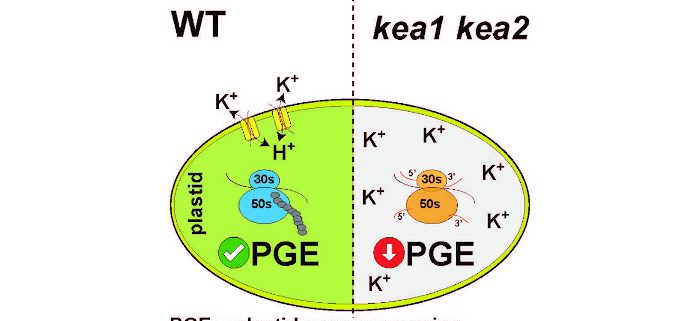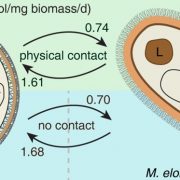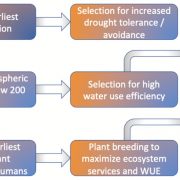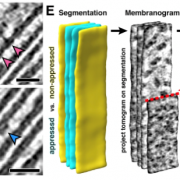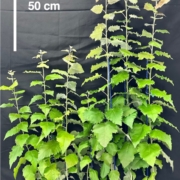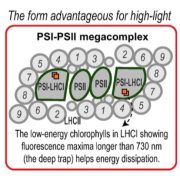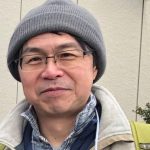Keeping an “i-on” chloroplast gene expression
Rachael Ann DeTar and Hans-Henning Kunz both at School of Biological Sciences at Washington State University & Plant Biochemistry at LMU Munich
Background: Proteins that transport simple charged molecules (ions) are components of all plant cell membranes, including chloroplast membranes. Chloroplast envelope membranes delineate the chloroplast from the rest of the cell, and the thylakoid membranes house many proteins used for photosynthesis. Each of these membranes contains its own set of ion transport proteins. The space between the envelope and thylakoid membranes is called the stroma. Ion transporters are responsible for maintaining the balance of ions or “ion homeostasis” of the stroma. The stroma contains a small genome with ~120 genes left over from the chloroplasts’ bacterial ancestor, as well as ribosomes and other machinery needed for gene expression. The expression of the chloroplast genome in coordination with genes in the nucleus is essential for chloroplast development and function. However, little is known about how ion homeostasis influences the expression of the chloroplast genome.
Question: We wanted to know if disrupting ion homeostasis would influence plastid gene expression, and in turn impair chloroplast development. This was inspired by the observation that losing two genes for K+ ion transporters in the chloroplast envelope, KEA1 and KEA2, delayed leaf greening and caused underdeveloped chloroplasts in Arabidopsis thaliana plants.
Findings: Plants missing KEA1 and KEA2 struggled to complete RNA maturation—the process where a newly transcribed RNA is cut or otherwise altered—in the chloroplast. Our experiments showed that the nuclear-encoded helper proteins for RNA maturation struggled to bind their stromal partner RNA in plants missing KEA1 and KEA2. This defect was prominent for chloroplast ribosomal RNAs. Correspondingly, there were fewer functional ribosomes, and chloroplast protein synthesis rates were low in mutants. As a result, plants missing KEA1 and KEA2 lack enough important chloroplast proteins, and thus remain underdeveloped.
Next steps: We have an intriguing hypothesis that KEA1 and KEA2 activity is altered to regulate chloroplast gene expression, and hence chloroplast development. We want to investigate this hypothesis by testing if these transporter proteins interact directly with components of the chloroplast gene expression machinery, and if doing so influences ion transport activity. Our research has revealed a role for ion transporters in the plant cell.
Rachael Ann DeTar, Rouhollah Barahimipour, Nikolay Manavski, Serena Schwenkert, Ricarda Höhner, Bettina Bölter, Takehito Inaba, Jörg Meurer, Reimo Zoschke, Hans-Henning Kunz. (2021). Loss of inner-envelope K+/H+ exchangers impairs plastid rRNA maturation and gene expression. Plhttps://doi.org/10.1093/plcell/koab123


